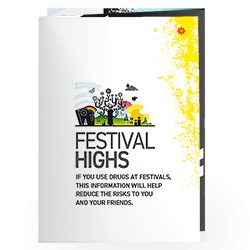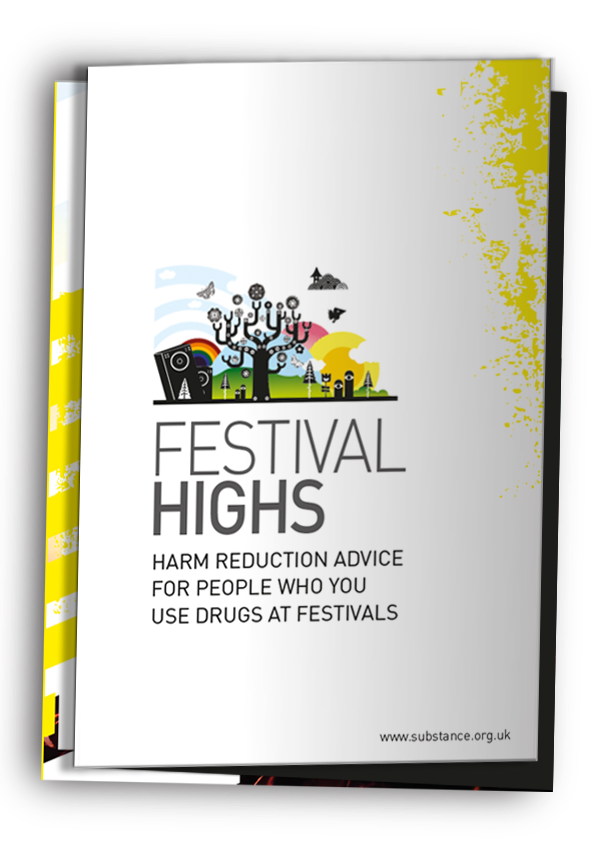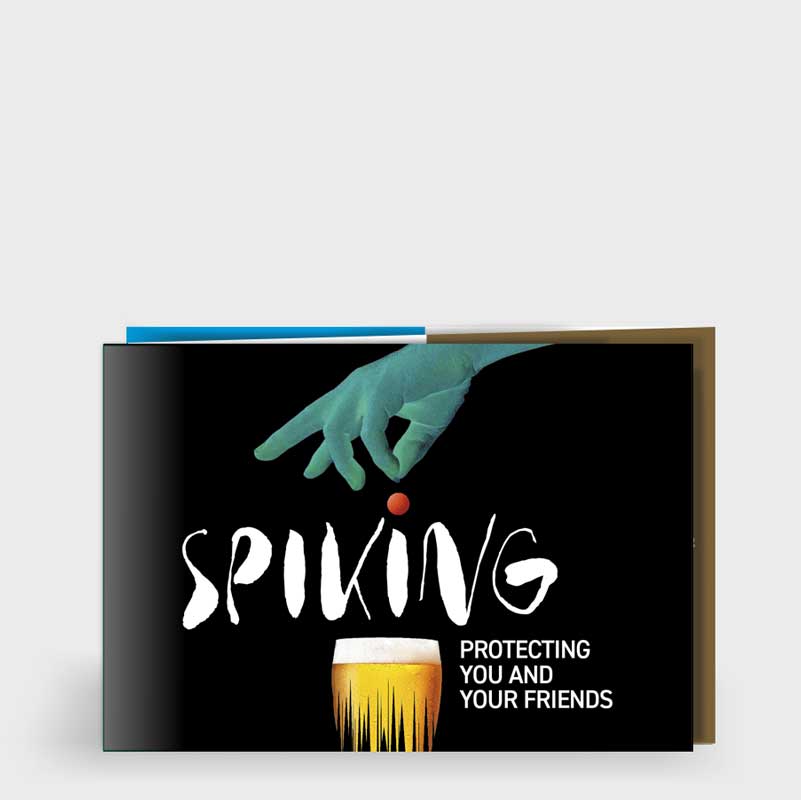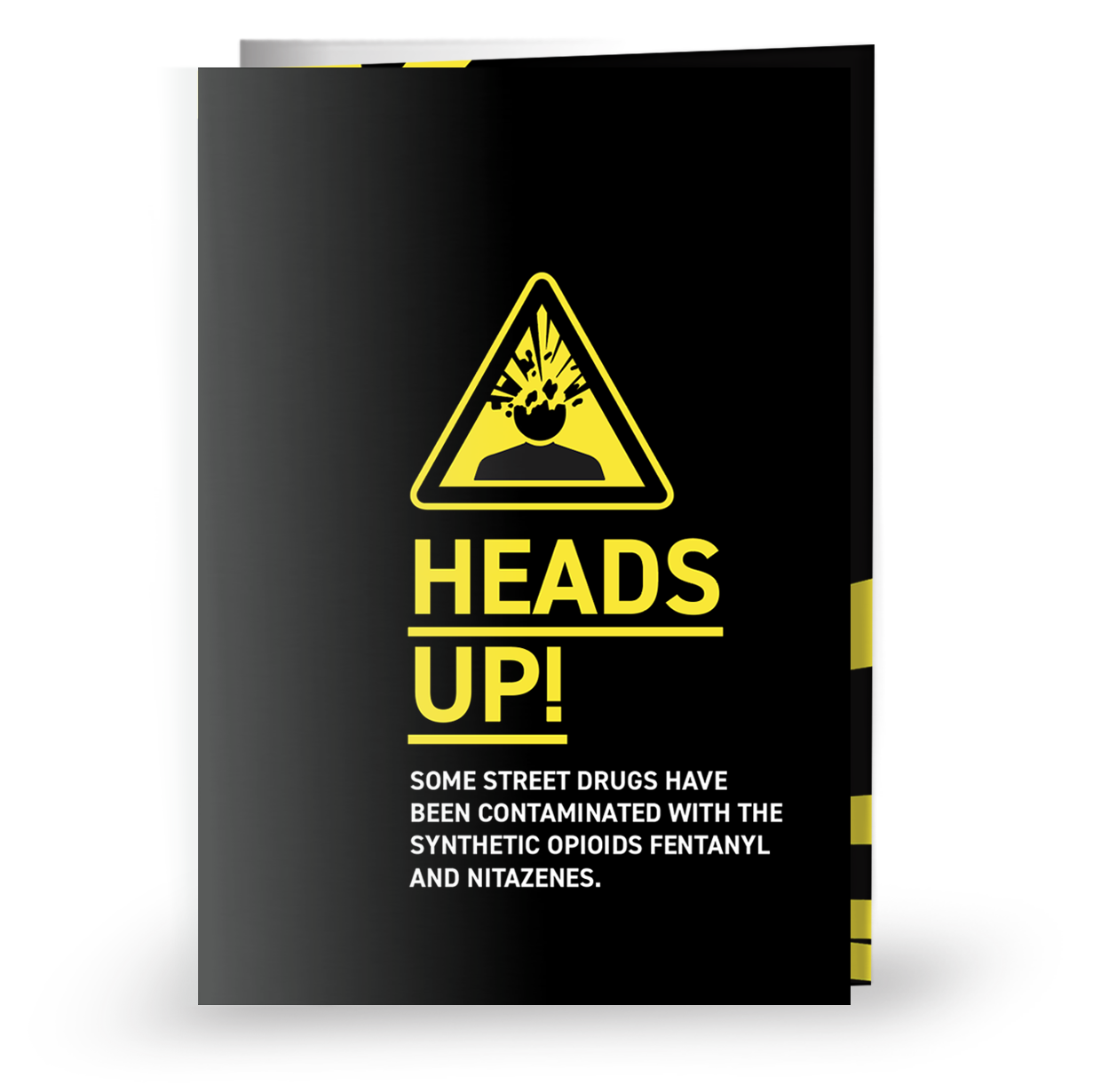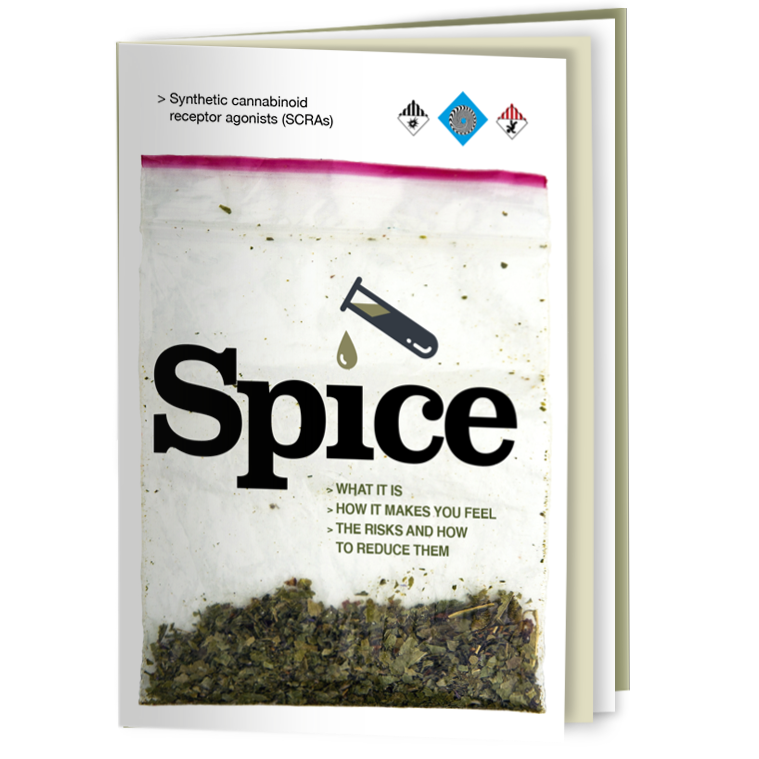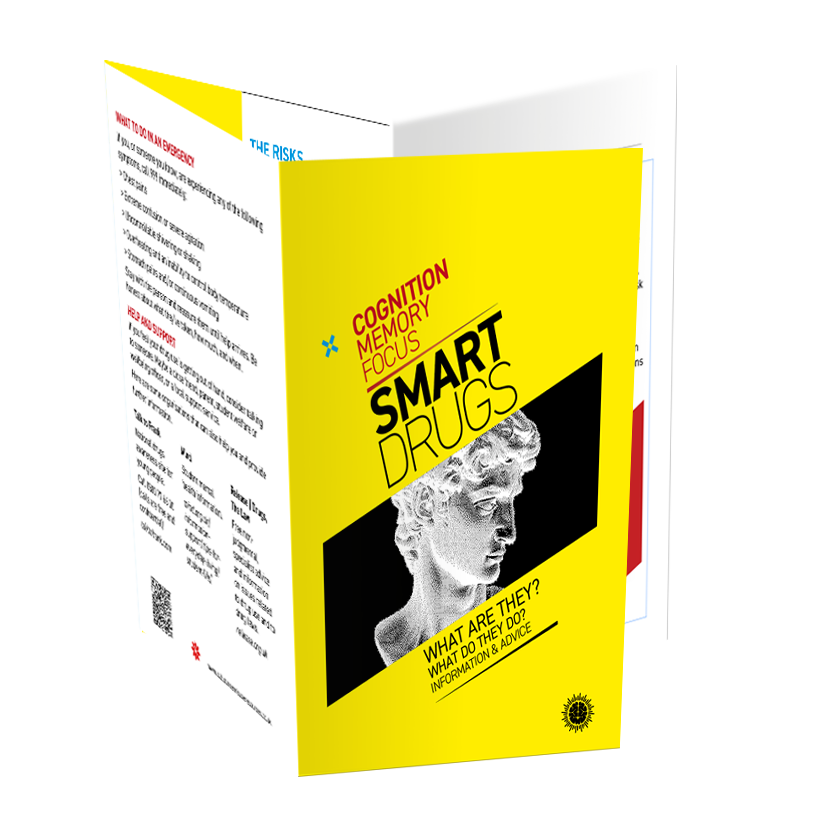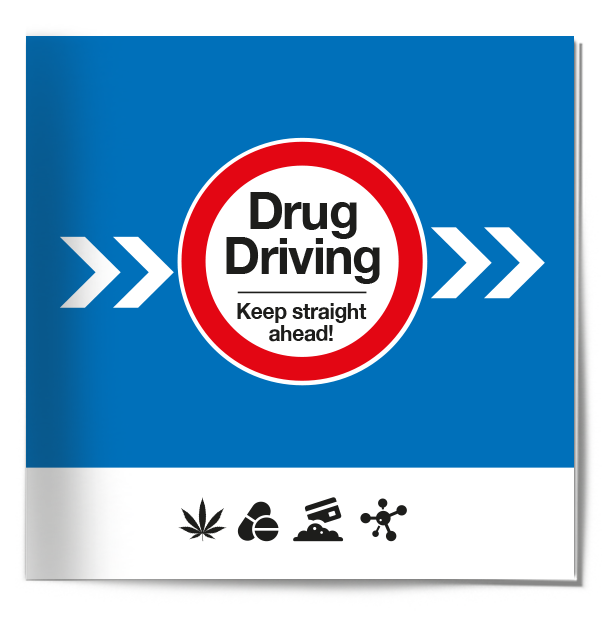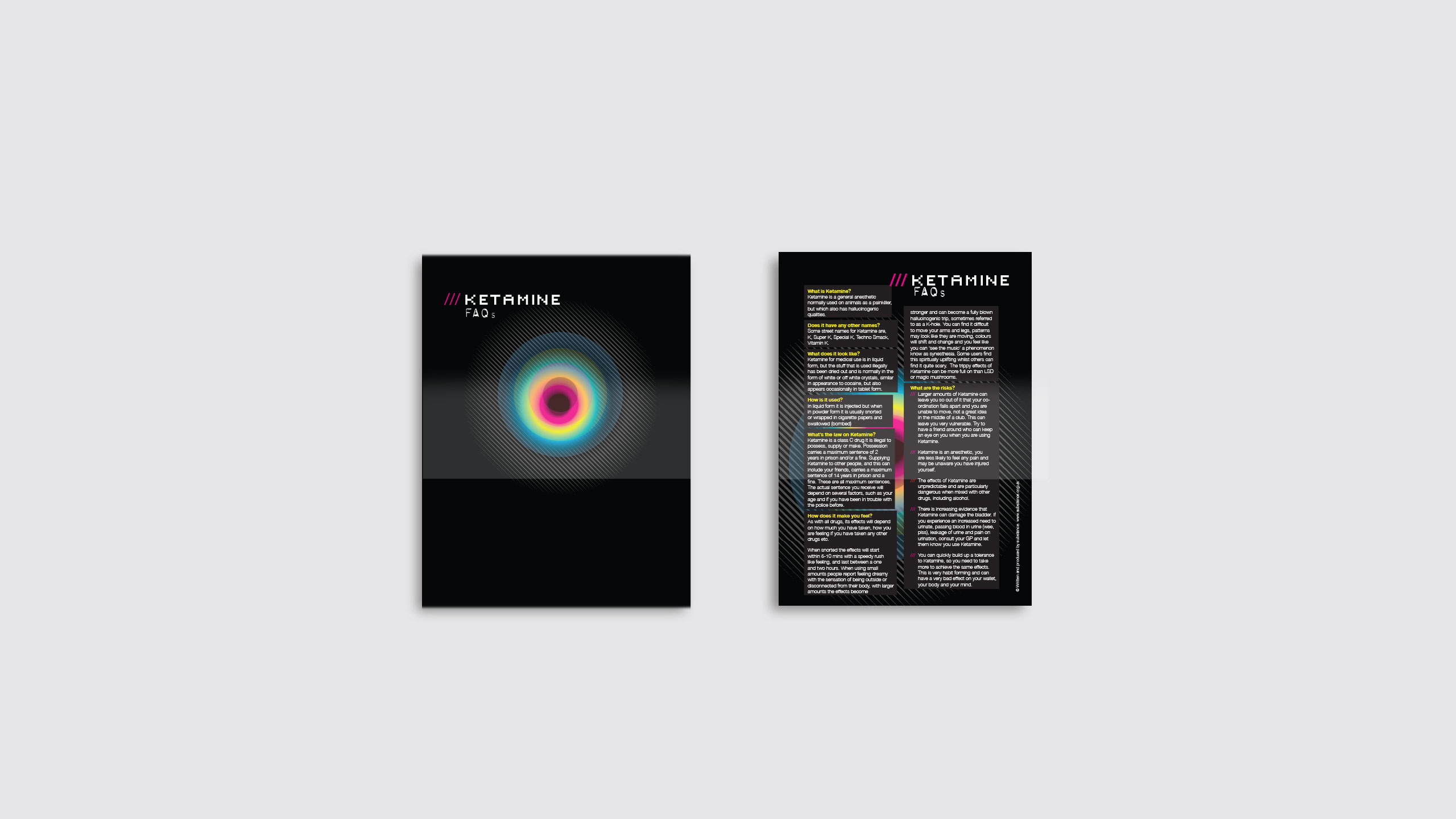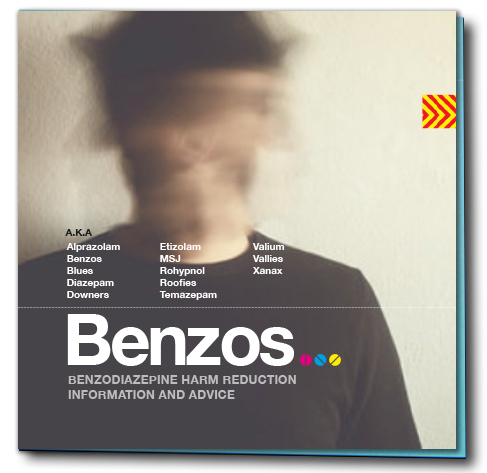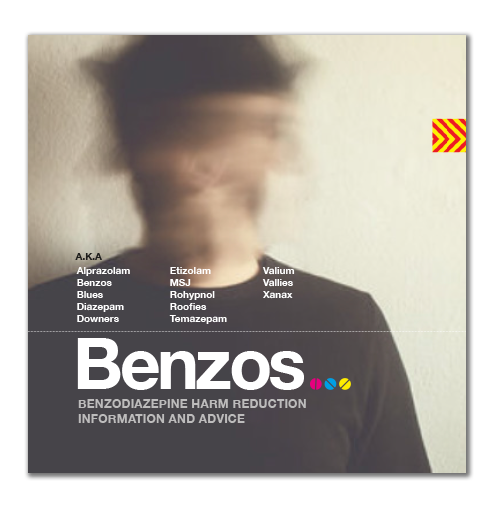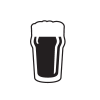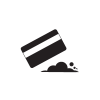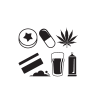Festival Highs: Reducing the risks of using drugs at festivals
- Article Introduction: Learn essential information about drug-testing, mixing drugs & alcohol, taking too many drugs, overdose, synthetic opiods and looking after each other.
FESTIVAL HIGHS
Reducing the risks of using drugs at festivals
Essential information about drug testing, mixing drugs & alcohol, taking too many drugs, overdosing, synthetic opioids and looking after each other.
WHO DOESN’T LOVE A GOOD FESTIVAL? SOME OF THE BEST BANDS AND DJs IN THE WORLD, TIME WITH YOUR MATES AND, FOR SOME OF YOU, DRUGS: LEGAL AND ILLEGAL.
People take all kinds of drugs at festivals. Some, such as alcohol, are legal. Others, like cannabis, ecstasy, cocaine, ketamine, mephedrone, mushrooms and LSD, are illegal. New drugs (formerly known as legal highs) are now automatically illegal under the Psychoactive Substances Act 2016.
Some drugs speed you up, others slow you down, while some turn your head upside down and inside out. The trick to surviving a festival is making sure they don’t speed you up or slow you down too much.
The only way to avoid the risks associated with using drugs is not to use them. If you choose to take them at a festival, here are some ways to look after yourself and your mates.
HOW DO YOU KNOW WHAT YOU’RE TAKING?
The answer is you can’t be sure. One powder or pill looks much like any other, so you won’t know how long it takes to come up, how powerful it is, or how it will make you feel.
TEST YOUR DRUGS
Some festivals now offer a drug-testing service on the festival site. When you arrive, find out where they are. The service is confidential and non-judgemental and can help you identify what is - or isn’t - in your drugs.
This doesn’t mean they’re safe to use, but it can tell you if drugs are more potent than usual or have been mixed with unexpected substances.
LOW AND SLOW
Even if you do have your drugs tested, always exercise caution.
Using a small amount and giving it time to take effect before using more will keep you safer.
FENTANYL AND NITAZENES
More and more powerful synthetic opioids like fentanyl and nitazenes are being mixed with other drugs, increasing the number of overdose deaths. Be careful: test your drugs and go low and slow.
TAKING TOO MANY DRUGS
Using drugs can have long-term effects on your health, but the most immediate risk at festivals is overdose - basically, taking too many drugs.
Overdose signs will vary depending on what type of drugs you have taken
Overdose signs for stimulant drugs such as ecstasy and mephedrone:
- shallow breathing
- fast or racing pulse
- rigid muscles
- hyper-aggression/mania
- seizure
- unconsciousness
Overdose signs for depressant drugs such as GBL and heroin, alcohol and Xanax:
- slowed breathing
- pale or clammy face
- fingernails and lips turn blue or purplish black (greyish or ashen on dark skin)
- pulse (heartbeat) is slow, erratic
- unresponsive
What to do if you think someone is overdosing or becomes ill
Most festivals have a medical tent with staff to help a person through emergencies, so find out where it is when you arrive on-site.
If someone is showing signs of overdose, get them to medical help as soon as you can.
If you have to leave them alone to get help, put them in the recovery position before you leave them.
Please don’t be worried about letting medical staff know what they’ve taken. Show them the substance so it can be identified, and the proper treatment can be given.
MIXING DRUGS
Using several drugs at the same time - and this includes alcohol - is dangerous.
Overdose is frequently caused by taking more than one drug or adulterated drugs.
Taking drugs throughout a two or three-day festival can put you under a lot of strain and increase the risks to your mind and body.
OVERHEATING
Stimulant drugs cause your body temperature to rise. So, if you’ve taken drugs and been dancing all day and well into the night, you can get dehydrated and suffer heatstroke, which can lead to organ failure and death.
Heatstroke symptoms include
nausea, vomiting, fatigue, weakness, headache, muscle cramps, aches and dizziness.
Stay hydrated. Always carry a bottle of water or a sports drink with you and sip it regularly. Take frequent breaks and find somewhere cool and quiet to chill out for a while.
Also, it can be a long way back to your tent or trailer, especially if you get lost. Make sure you have warm, dry clothes to wear as you head back. Cooling down too quickly can make you ill.
OVERDOING IT
Going to a festival can be like going on holiday: you can get overexcited, feel invincible, and do too much too soon, which can lead to dangerous situations.
Some drugs, such as ketamine or GBL/GHB, can be very dose-dependent. A small increase in the amount used can leave you physically helpless and vulnerable to accidents and assaults (both physical and sexual).
TAKE A BREAK
Being off your face in the middle of a huge festival site with thousands of people can be daunting. It can also make you anxious and paranoid. If you or any of your friends start to feel this way, chill out in a quiet place. Take someone with you or tell your mates where you’re going so they can keep an eye on you.
SEX
Some drugs can increase sexual desire even though they decrease the ability to perform. This could increase the chances of risky sexual behaviour. Always carry condoms, and make sure you use them.
Consent
People who have taken lots of drugs or alcohol may be in no fit state to consent to sex. Remember, sex without consent is rape.
HOME TIME
REMEMBER, if you’ve been drinking alcohol and taking drugs during a festival, you may be unfit to drive.
You’re likely to be tired from the festival anyway, so it could be dangerous for you, your passengers and other road users.
DRUG DRIVING
Like drink driving, driving with above the permitted drug level in your system is illegal - even if they don’t affect your driving and will lead to a ban, fine or even prison. The permitted levels are tiny. If you’ve recently taken drugs, there’s a good chance you’ll be over the limit.
Finally...
It’s your body, so look after it. Many websites and forums can provide you with more information than we can fit into this leaflet. So, before you decide to use any drug, find out as much as you can about it from as many different sources as possible. Below, we have listed some places that may be of help.
erowid.org
Drug information library
release.org.uk
Drugs and the law
wearetheloop.org
Drug-checking at festivals
wedinos.org
Anonymous online drug-checking service
New, and updated resources
Cumbria, Northumberland, Tyne and Wear NHS Foundation Trust
DRD Co-ordinator (Aberdeenshire)
Life+
- Created on .
- Hits: 472
